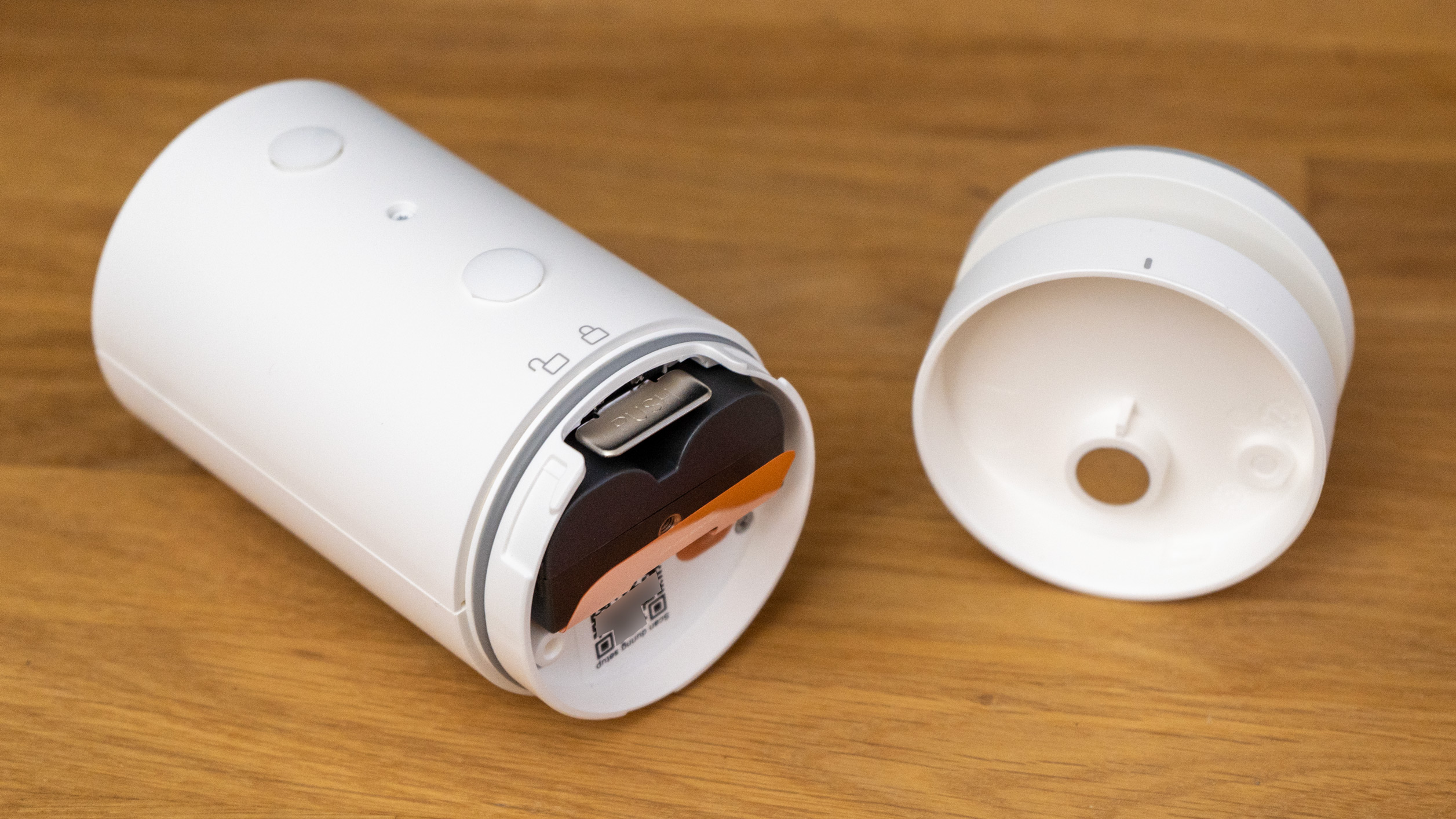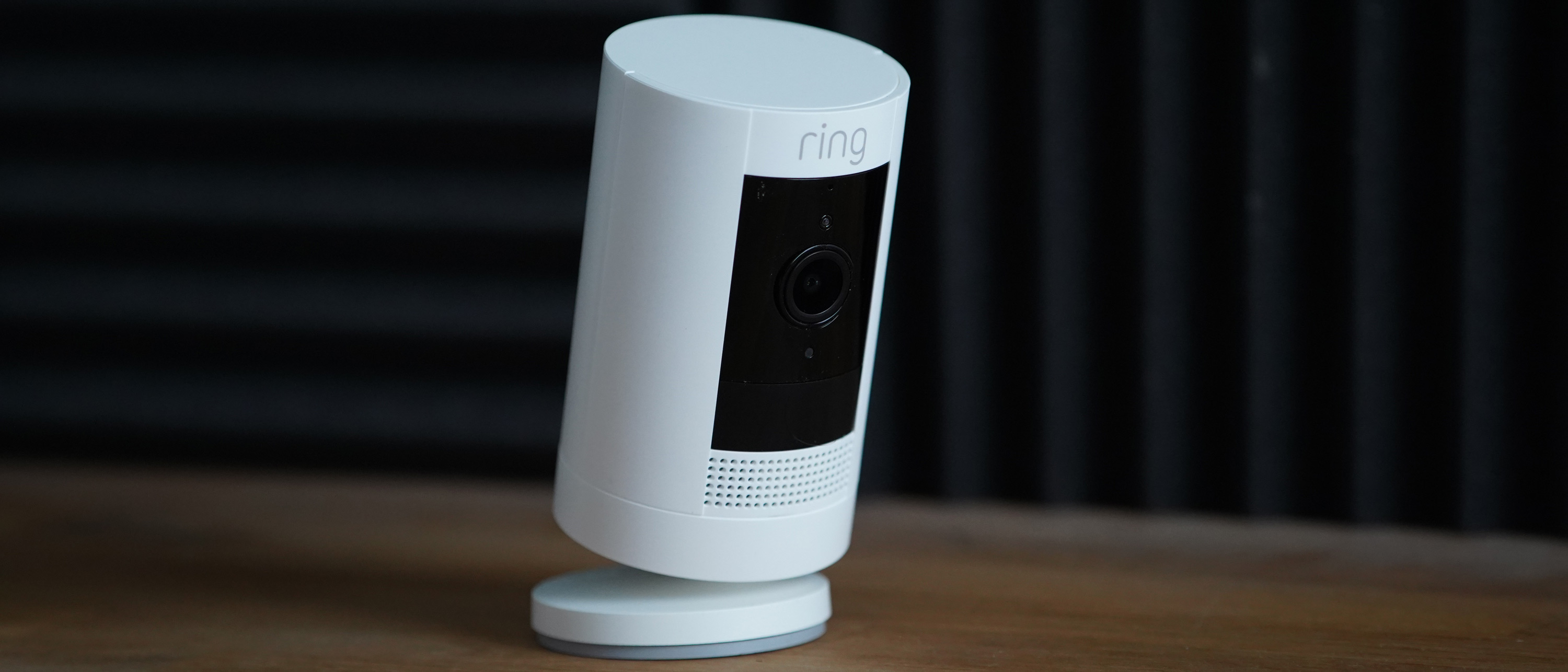Digital Camera World Verdict
A great little camera with cunning tamper-proof design which can be mounted indoors or out, and moved anywhere you have wi-fi. At its best with a fairly pricey cloud subscription the Ring returns your investment with decent battery life, brilliantly realised software, a timelapse-like feature and relatively reliable person detection (so not many false alerts).
Pros
- +
Battery allows for flexible positioning
- +
Suitable for mounting or standing
- +
Ring ecosystem includes pan/tilt mount and solar system
- +
Effective people recognition
- +
Snooze function
Cons
- -
No HomeKit or Google Assistant support
- -
Subscription fee for full feature set
- -
Battery charged via MicroUSB
Why you can trust Digital Camera World
Monitoring your home or business outside, day or night, without running cables is the promise of the Ring Stick Up Camera Battery. Like other similar devices, it is motion-activated, and is at its best when used in conjunction with a subscription service. You can always see a live view via your phone (iOS / Android), but the subscription provides storage letting you review past ‘events’ – recordings automatically triggered by motion.
Ring is one of the two security camera companies Amazon own, the other being Blink. Ring has the broadest play with its signature doorbells joined by cameras like this and alarm systems and entry sensors. It won’t surprise you to read that all Ring cameras offer compatibility with Alexa, for example letting you ask an Alexa Show screen to let you see the view from the camera in the garden. It’s also possible to get voice alerts via other Alexa devices – but (as cynics will predict) there is no similar integration with Apple’s HomeKit or Google Nest Hub smart displays.
Ring Stick-Up Camera Battery: Specifications

Video resolution: 1080P
Field of view: 130˚ (diagonal)
Audio: Two-way
Wi-Fi: 802.11 b/g/n 2.4GHz
Dimensions: 60 x 60 x 97 mm (2.36 x 2.36 x 3.82 in) plus stand
Build and handling
Ring has opted for a cylindrical design with twist-off base, which has a nice aesthetic. The camera and infra-red lights are merged relatively subtly with a single piece of glossy black plastic, a similar look to other Ring devices. The rubber seals on the back conceal a barrel-style power connector (for the optional solar panel) and a tripod-style thread for attaching the foot/wall mount. The base itself can be tilted a little so the camera isn’t pointing entirely horizontally. Alternatively, for wall mounting, the foot can be removed altogether with cross-head screw and screwed into the tripod-like thread. This separates it from the now-flat camera bottom.
There is also a removable rubber cover where a screw can be used to make the base tamper-proof.

Setup is guided elegantly by the app (iOS or Android), and it even has the sense to ask if you’re positioning the camera inside or out, and – if inside – will it be looking out of the window. Presumably, it can then avoid reflections at night from the infrared light. Obviously a battery-powered camera can be easily re-positioned, so settings would need revisiting, but this is still a very friendly approach to setup that novices will appreciate.
Performance

Given Ring choose to restrict the system to 1080P, we have no complaints about the video quality day or night and the field of view gives a good view of a large room or space. In good light color is fine, and at night the infra-red lighting doesn’t over-expose near subjects.
In both cases it is adequate for the person detection feature (which requires the cloud subscription) to work well. The speaker and two-way talk is also impressive, with room-filling sound.
Video sample: A person in the margins of the shot is enough to trigger the person warning (though in retrospect we should probably have angled the camera down a bit).
Ring’s app is well designed and makes setup a painless process. It includes features like privacy zones and the ability to temporarily turn off only indoor or all connected Ring cameras.
We especially liked the ‘Snapshot Capture’ feature, which captures images every 14 or 60 minutes (you choose depending on battery preference); these are used to make swiping through the event history a little like a timelapse which has an overall benefit on the experience.
Ring Stick-Up Camera Battery: Verdict
The Ring Stick-Up camera is a well-realised device, and benefits from a few years of refinement when it comes to the app, which – even for non-Alexa users – is one of the best in the market. The simple explanations with each function (including potential effect on battery) are welcome and clearly tightly edited.
We find it frustrating that integrations are only offered for Alexa, not HomeKit or Google Assistant, but Ring are Amazon-owned. Moreover Ring have their own system which integrates nicely, including a Chime/range extender which can play different notes depending on whether a camera has a motion trigger or the doorbell is pressed. Given Ring is at the higher end of cloud subscription pricing, and the cloud is needed to get anything other than live view, it becomes more efficient if you have 3 or more devices.
Admittedly we’d have like to have seen 2.7K or 4K options for a camera which can be mounted outdoors, but the solid usability is probably more significant. If you’re looking for exclusively indoor use it might be overkill, but with good person sensing (so low false alerts) this is a good choice anywhere you want to place it.
Read more:
The best video doorbell cameras
The best body cameras for personal security
Best VPN for photographers

With over 20 years of expertise as a tech journalist, Adam brings a wealth of knowledge across a vast number of product categories, including timelapse cameras, home security cameras, NVR cameras, photography books, webcams, 3D printers and 3D scanners, borescopes, radar detectors… and, above all, drones.
Adam is our resident expert on all aspects of camera drones and drone photography, from buying guides on the best choices for aerial photographers of all ability levels to the latest rules and regulations on piloting drones.
He is the author of a number of books including The Complete Guide to Drones, The Smart Smart Home Handbook, 101 Tips for DSLR Video and The Drone Pilot's Handbook.

